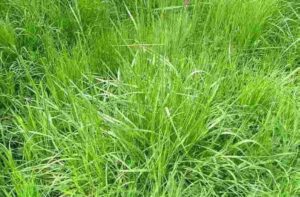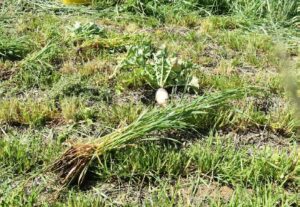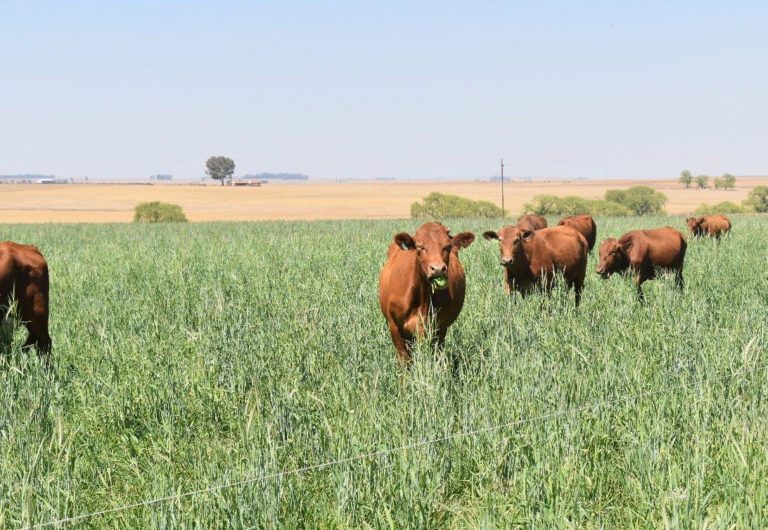Botswana is home to more cattle than people. In recent years, the government has made an effort to encourage agriculture in order to boost the national economy. Many farms are being set up, particularly in the northern regions, and many irrigation projects are launched. These irrigated farms are mainly focussed on the cultivation of various grain products and some other crops such as potatoes.
But they can also be used to supply feed to cattle farmers or be successfully operated as cattle farms with irrigated pastures. Good pastures will improve the condition of your herd and save you money by cutting the spending on expensive feed. Farmers usually have two choices of pastures for their cattle. The first is to let the animals graze on the natural pastures that are available on the farm, and the second is to plant specific grasses and legumes that can increase the carrying capacity of your farm.
Good management is key to success of your pastures. Certain guidelines need to be followed. Which plants to choose from, when to plant them, the type and quantity of fertiliser that you use, whether you have irrigated or dry lands … all these factors play a role in the type of pasture that will best suit your needs.
Whether you plant other crops or pastures, it is always beneficial to have irrigation. However, it does not mean that you cannot plant if you do not have an irrigation system already in place. In the modern age of farming there are many drought resistant cultivars.
Winter is approaching fast in the southern hemisphere. This is the dry season for summer rainfall areas of Southern Africa, when natural fields dry out and are easily overgrazed. The shortage of food and water is the cattle farmer’s worst nightmare. Luckily, there are some options to choose from when it comes to winter pastures. The following crops can be planted from February to July in order to ensure good quality pastures to carry you through the dry season. It is recommended that these species are planted under irrigation for winter pastures.

Tall Fescue grass is also known as fescue reed and is an excellent choice for winter pastures due to its high nutrient content and ability to survive cold conditions. It is also versatile and adapts well to various climates and soils. Photo: https://alchetron.com/
Tall Fescue (Festuca arundinacea)
Tall Fescue grass is highly adaptable to different climatic and soil conditions. It can also be used in heavier soils and wetlands. It is recommended that these seeds are sown at a ratio of 25 to 30 kg/ha or planted in rows at 20 to 25 kg/ha.
Cocksfoot (Dactylis glomerata)
Cocksfoot grass has high nutritional value, and animals find this type of grass very tasty. It is resistant to drought and can be sown at a ratio of 20 to 25 kg/ha or planted in rows using 15 to 20 kg/ha.
White Clover (Trifolium repens) and Red Clover (Trifolium pratense)
These two types of clovers are usually planted together. The White Clover takes longer to reach maturity, but does not have to be replanted every year. Both of these can be used in combination with any of the abovementioned grasses to increase the nutrient value of the pasture.
In many cases farmers solely depend on rain and do not have access to the benefits of irrigation systems, or they might be small-scale farmers who believe it is not worth the cost and effort to install irrigation systems and therefore rely on the natural vegetation.
Fortunately, even dryland or smallscale farmers can benefit from planting pastures for their animals. Dryland grasses need to be planted earlier than irrigated grasses in order to receive the late rains before the start of the dry winter. Ideally, they should be planted between February and April in order to be mature enough to be grazed by May or June.

It is often recommended that farmers plant a combination of pasture plants in order to obtain the best feeding value from the fields. The combination of the right plant species can increase the quality of the feed significantly and maintain good animal health throughout the winter.
Oats (Avena sativa)
Oats provides good nutrients and roughage to cattle iets and is also very hardened against drought and frost. It is recommended to sow oats at 50 to 70 kg/ha or planted in rows at 40 to 50 kg/ha. It also has an exceptionally high potential yield.
Triticale (Tritico secale)
Triticale can withstand low temperatures and frost, and grows quickly with minimal water. It also has a high potential yield and grows easily. It is most effective when planted in combination with oats. It can be sown at 60 to 80 kg/ha or planted in rows using only 35 to 45 kg/ha.
Rye (Secale sereale)
Rye is best utilised when planted in combination with triticale and oats. It has a high nutrient value but is not as tasty as the other winter feeds. Between 40 to 50 kg/ha can be sown on the fields, or it can be planted in rows using only 30 to 50 kg/ha. It is hardened against cold conditions and can withstand the effects of frost.
Although these plants can increase the carrying capacity of your farm, you still need to consider the number of animals that will graze on these pastures, and plant accordingly. It is a good idea to keep in mind that cattle will consume about 2,5% to 3,5% of their own body weight in roughage per day.
The best advice would be to consult the experts. Most seed providers will help you plan the correct combination of plants to meet your specific needs. It is important to consider the existing carrying capacity of the farm, the number of animals that need to graze on the pastures and the availability of water when planning your winning pastures.









